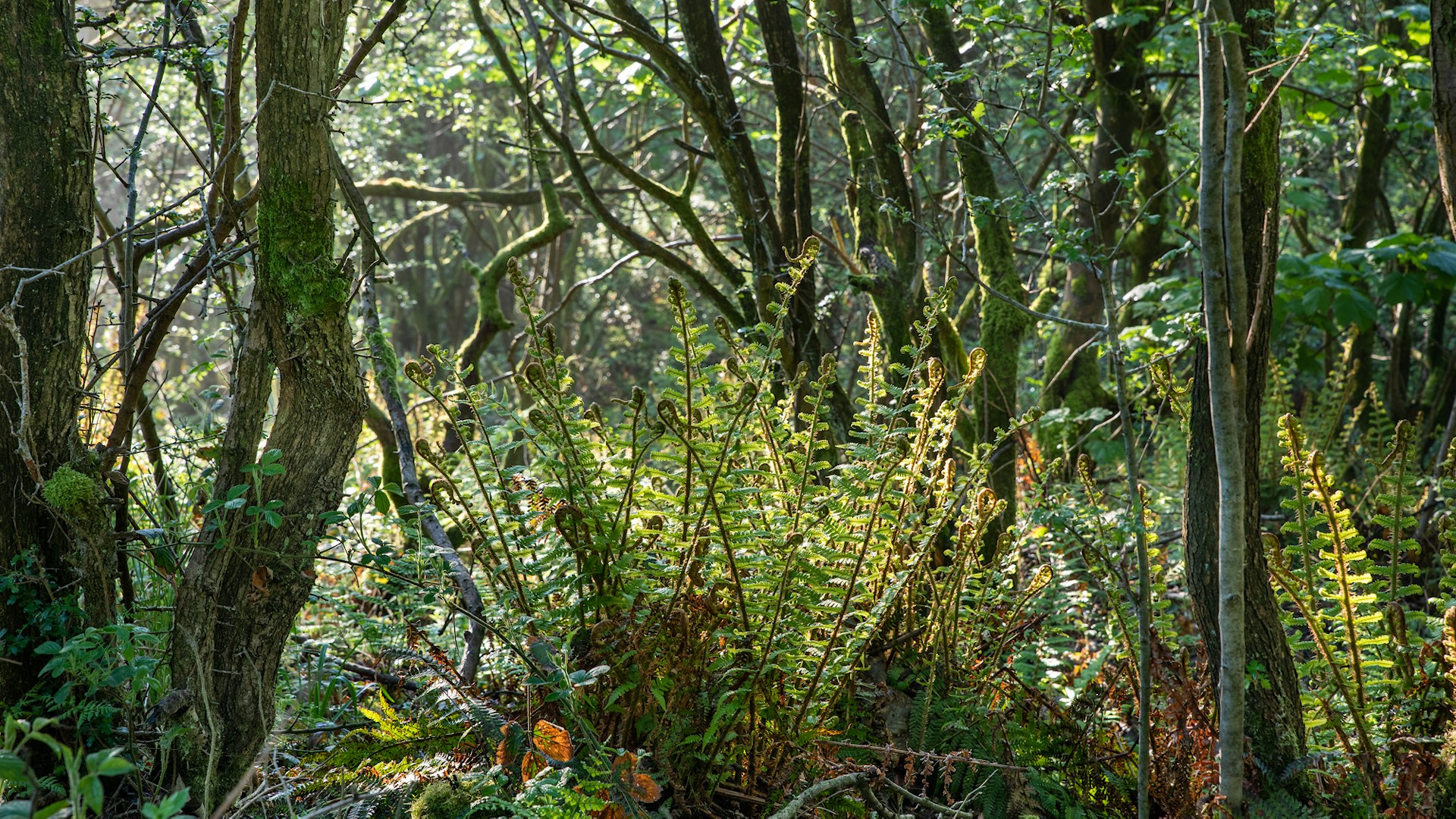We want to see the Peak District National Park teeming with wildlife
Derbyshire Wildlife Trust’s Phoebe Cox, from the Wild Peak team, argues that the UK will only achieve large-scale restoration of ecosystems and thriving local economies if we commit to rewilding our national parks.

Published 27/07/2021
“Our vision is of a land restored”
Phoebe Cox
Living Landscape Adviser, Derbyshire Wildlife Trust
The Peak District – the first national park ever to be inaugurated, right back in 1951 – is renowned for its beauty. With majestic rivers, striking dales, moors, wooded valleys and uplands, this national park should be teeming with wild animals and plants. But it’s not.
Here at Wild Peak, a rewilding project led by Derbyshire Wildlife Trust in the Peak District National Park, we want to see a wilder, richer, healthier place that ensures a thriving Peak District for generations to come. We want to see a land restored.
Imagine a place where golden eagles and ospreys once again soar overhead, hen harriers are back where they belong amidst abundant wildflower meadows rich in insect life and healthy blanket bogs. Where pine martens play, where adders and red squirrels thrive in native woodlands that are expanding, and beavers are restoring and creating new wetlands. Our vision is that natural processes will be allowed to lead the way so that the uplands become wilder and the landscape develops freely over time.

Together – with the input of community groups, local landowners and residents – we’re developing a vision for the future. One that makes sense not only for wildlife, but for people.
It’s only by restoring woodlands, peat bogs and species-rich grasslands in our national parks to lock up carbon, create healthier soils, and regulate the flow of floodwater that we can protect our way of life and create more diverse and resilient local economies.
It’s only by restoring the landscape to a place that is exciting and teeming with wildlife that our national parks will inspire more people to benefit from time spent in nature, helping boost health and wellbeing.
We’ve already had an incredible response from people in the region. Despite having only started work on the project in March 2021, more than 600 hectares of locally owned land has been pledged for rewilding. We’re now at a stage where we’re regularly out visiting landowners and community groups that want to be involved – to offer advice on sustainable farming, planting woodlands, creating wetlands, connecting wild pieces of land together and the reintroduction of species. Just last week I visited three sets of interested landowners in Whaley Bridge!
“Without the support of our region’s larger landowners, there is a missing link”
But even with the growing momentum amongst our local communities and landowners it’s clear that, without the support of some of our region’s larger landowners, there is a missing link in facilitating landscape-scale change.
Public bodies and statutory undertakers (such as water companies) own over 20% of the land within our Wild Peak boundary and we need their commitment. That’s why Rewilding Britain’s Wilder National Parks campaign is so important: it’s calling on the government to also do their bit to rewild our national parks.
As well as being vital for making real and vital progress towards The Wildlife Trust’s national goal that at least 30% of our land and sea are connected and protected for nature’s recovery by 2030, the Wilder National Parks Campaign is key to ensuring that the inspiring vision for Wild Peak is achievable.

Push for change
Urge your local leaders to act wild and commit to supporting the Rewilding Manifesto.
Email your MP
Our vision
We have big ambitions. Find out what we’ve set out to achieve through rewilding.
Our vision



